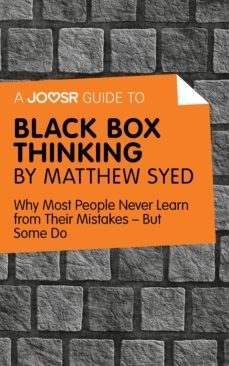Imprescindibles
Ficción
No Ficción
Ciencias y tecnología Biología Ciencias Ciencias naturales Divulgación científica Informática Ingeniería Matemáticas Medicina Salud y dietas Filología Biblioteconomía Estudios filológicos Estudios lingüísticos Estudios literarios Historia y crítica de la Literatura
Humanidades Autoayuda y espiritualidad Ciencias humanas Derecho Economía y Empresa Psicología y Pedagogía Filosofía Sociología Historia Arqueología Biografías Historia de España Historia Universal Historia por países
Infantil
Juvenil
#Jóvenes lectores Narrativa juvenil Clásicos adaptados Libros Wattpad Libros Booktok Libros de influencers Libros de Youtubers Libros Spicy Juveniles Libros LGTBIQ+ Temas sociales Libros ciencia ficción Libros de acción y aventura Cómic y manga juvenil Cómic juvenil Manga Shonen Manga Shojo Autores destacados Jennifer L. Armentrout Eloy Moreno Nerea Llanes Hannah Nicole Maehrer
Libros de fantasía Cozy Fantasy Dark academia Hadas y Fae Romantasy Royal Fantasy Urban Fantasy Vampiros y hombres lobo Otros Misterio y terror Cozy mistery Policiaca Spooky Terror Thriller y suspense Otros
Libros románticos y de amor Dark Romance Clean Romance Cowboy Romance Mafia y amor Romance dramatico Romcom libros Sport Romance Otros Clichés Enemies to Lovers Friends to Lovers Hermanastros Slow Burn Fake Dating Triángulo amoroso
Cómic y manga
Novela gráfica Novela gráfica americana Novela gráfica europea Novela gráfica de otros países Personajes, series y sagas Series y sagas Star Wars Superhéroes Cómics DC Cómics Marvel Cómics otros superhéroes Cómics Valiant
eBooks
Literatura Contemporánea Narrativa fantástica Novela de ciencia ficción Novela de terror Novela histórica Novela negra Novela romántica y erótica Juvenil Más de 13 años Más de 15 años Infantil eBooks infantiles
Humanidades Autoayuda y espiritualidad Ciencias humanas Economía y Empresa Psicología y Pedagogía Filosofía Historia Historia de España Historia Universal Arte Cine Música Historia del arte
Ciencia y tecnología Ciencias naturales Divulgación científica Medicina Salud y dietas Filología Estudios lingüísticos Estudios literarios Historia y crítica de la Literatura Estilo de vida Cocina Guías de viaje Ocio y deportes
Matthew Syed
Recibe novedades de MATTHEW SYED directamente en tu email
Filtros
Del 1 al 5 de 5
Editorial Flamboyant, S.L. 9788417749088
Matthew Syed fue deportista olímpico y número 1 en el Reino Unido durante un montón de años. En este libro habla, desde su experiencia personal y con un lenguaje llano, de cómo explotar tu potencial y llegar a ser genial en lo que te propongas.Olvida la idea de "o naces con un don o es imposible conseguir lo que te propongas". Los consejos y la guía de Matthew te ayudarán a afrontar tanto los retos más cotidianos (aprobar un examen, actuar en una obra de teatro escolar, hacer trucos con el skate) como los más atrevidos (ser una estrella del pop, ganar un campeonato internacional). Todo es cuestión de cambiar de mentalidad, levantarse del sofá y entrenar tu genialidad.
Ver más
Tapa blanda
BOKISH 9781785672361
In todays fast-paced world, its tough to find the time to read. But with Joosr guides, you can get the key insights from bestselling non-fiction titles in less than 20 minutes. Whether you want to gain knowledge on the go or find the books youll love, Joosrs brief and accessible eBook summaries fit into your life. Find out more at joosr.com.What does it take to be truly successful in life? How do industry leaders and celebrated athletes stay ahead of the game? The answer is simple: they fail. Black Box Thinking by Matthew Syed is a study in failure. According to research, and as demonstrated time and time again by remarkable individuals and businesses, failure is necessary in order for us to progress. It is a valuable learning tool that leads to success. Learn exactly why this is true, and be inspired by real-life examples of those who have learned to embrace their failures for ultimate triumph.You will learn:· Why failure is not the enemy· That success has more to do with our mindset than any innate talent or ability· The lessons that can be learned when we embrace our mistakes.
Ver más
eBook
Empresa Activa 9788492921461
. Una idea sencilla pero muy efectiva para mejorar.
. Best Seller en Reino Unido y en Amazon.¿Qué tiene en común el equipo Mercedes de Fórmula Uno y Google?
¿Cuál es la conexión entre el equipo Sky d
Ver más
Tapa blanda
TEACH YOURSELF BOOKS 9781473613805
We all have to endure failure from time to time, whether it's underperforming at a job interview, flunking an exam, or losing a pickup basketball game. But for people working in safety-critical industries, getting it wrong can have deadly consequences. Consider the shocking fact that preventable medical error is the third-biggest killer in the United States, causing more than 400,000 deaths every year. More people die from mistakes made by doctors and hospitals than from traffic accidents. And most of those mistakes are never made public, because of malpractice settlements with nondisclosure clauses.For a dramatically different approach to failure, look at aviation. Every passenger aircraft in the world is equipped with an almost indestructible black box. Whenever there's any sort of mishap, major or minor, the box is opened, the data is analyzed, and experts figure out exactly what went wrong. Then the facts are published and procedures are changed, so that the same mistakes won't happen again. By applying this method in recent decades, the industry has created an astonishingly good safety record.Few of us put lives at risk in our daily work as surgeons and pilots do, but we all have a strong interest in avoiding predictable and preventable errors. So why don't we all embrace the aviation approach to failure rather than the health-care approach? As Matthew Syed shows in this eye-opening book, the answer is rooted in human psychology and organizational culture.Syed argues that the most important determinant of success in any field is an acknowledgment of failure and a willingness to engage with it. Yet most of us are stuck in a relationship with failure that impedes progress, halts innovation, and damages our careers and personal lives. We rarely acknowledge or learn from failure—even though we often claim the opposite. We think we have 20/20 hindsight, but our vision is usually fuzzy.
Ver más
Tapa blanda
Del 1 al 5 de 5


























